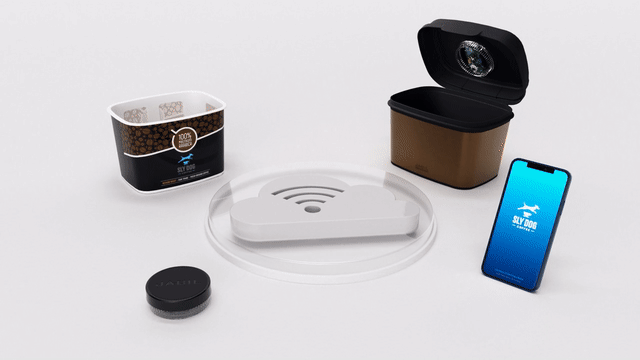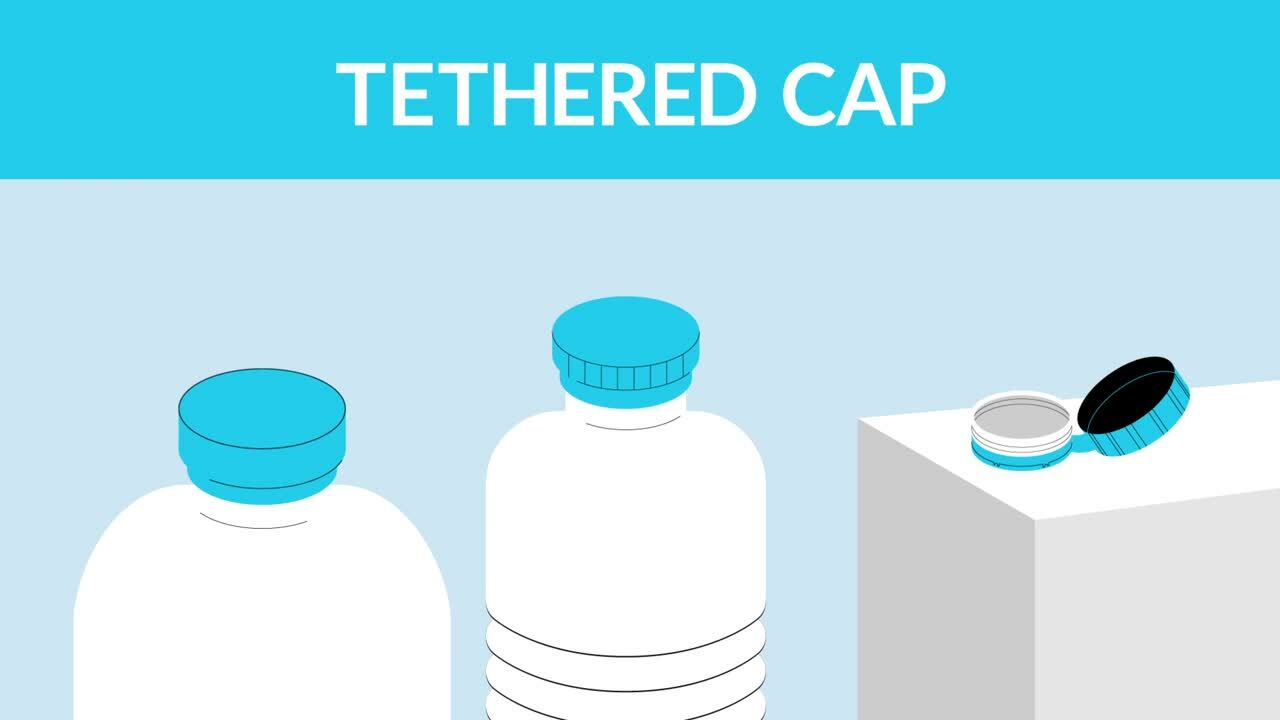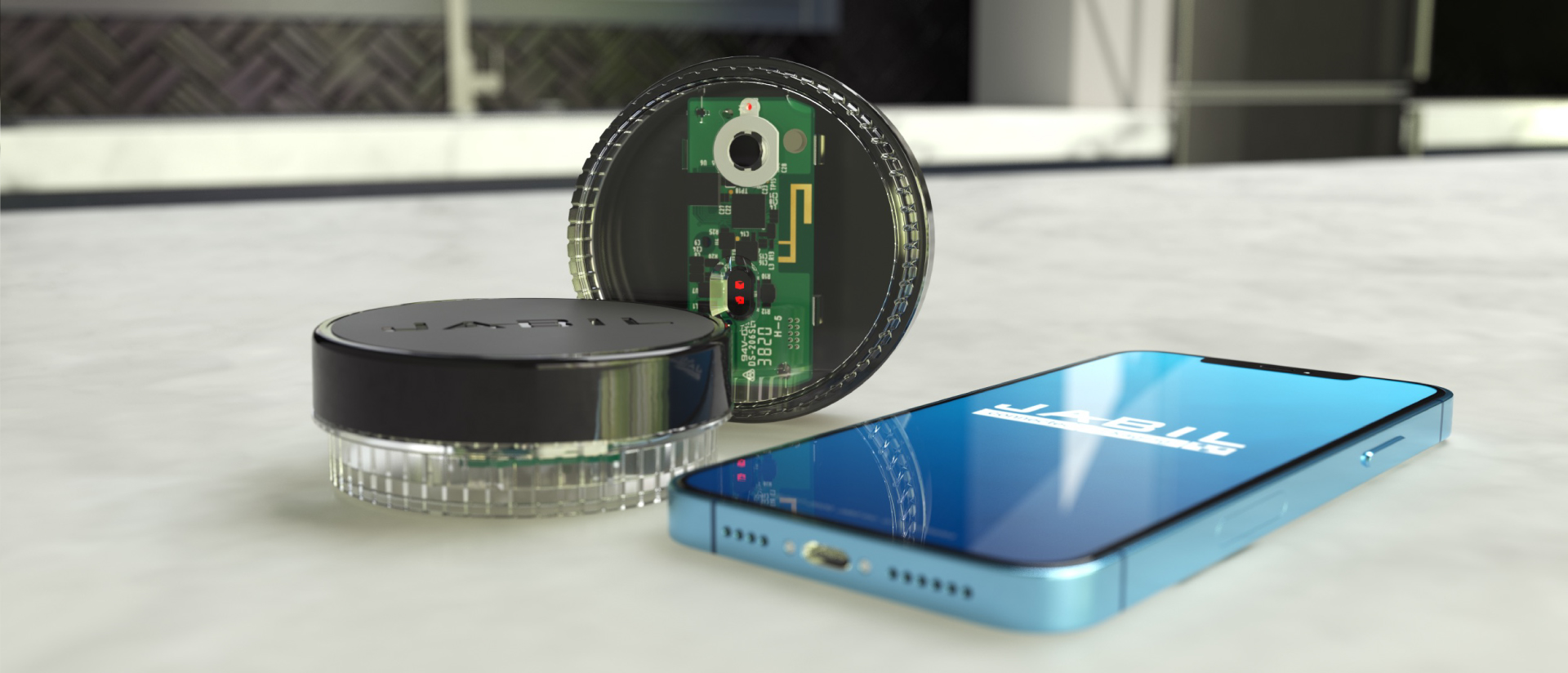Three Packaging Innovations Driven by Consumer Trends

Irrelevance is the most dangerous future a business can face. Often the result of unmet consumer demands and ignored trends, it is the death knell of a company. Industry and consumer trends are useless if those findings are not integrated into the business strategy. For consumer packaged goods (CPG) brands, packaging innovation is one important way to respond to consumer demands.
There’s no factor driving consumer demands and trends right now more than the pandemic. COVID-19 has pushed businesses of all types, including CPG brands, to accelerate the pace of innovation. CPG and retail brands have been forced to meet the demands for e-commerce sales that have grown more than 30% year-over-year since the pandemic began in the face of unprecedented — and unpredicted — shortages across the supply chain.
But that’s just one way consumers are pushing brands to evolve. Here are three innovations in the packaging industry driven by consumer trends:
1. E-Commerce Packaging
Before the pandemic, consumers were increasingly willing to shop through alternative channels outside of physical brick-and-mortar stores. Then, the outbreak of COVID-19 ushered in an extreme shift in consumer experience in a matter of months. By some estimates, the pandemic accelerated e-commerce by 10 years in 10 months with the widespread adoption of delivery services, buy-online-pick-up-in-store (BOPIS) and other omnichannel offerings. This is the time for a CPG digital transformation.
Brands are rapidly transitioning away from a world where packages only sit on store shelves waiting to entice potential buyers to one where a larger mix of product sits in warehouses or fulfillment centers awaiting a “purchase” webpage click. This requires a different type of packaging innovation to meet e-commerce needs.
Shopping online is now a regular part of most people’s lives. As of the end of 2020, online sales accounted for 21% of total retail purchases made in the U.S., up from 16% just a year earlier. E-commerce is central to the omnichannel retail experience and influences all other trends — from auto-replenishment with connected packaging to sustainable shipping materials, both of which are discussed below.
As people are purchasing more online, they’re also shifting to purchasing goods that may have been exclusively in-store purchases in the past — a pandemic-induced behavior that may not be going away anytime soon. For example, a May 2020 McKinsey report found that some beauty product brands were seeing e-commerce sales twice as high as pre-COVID-19 levels, while Sephora and Amazon’s beauty department saw increases of 30% online. Meanwhile, another survey by McKinsey found that between 35% and 40% of consumers expect to continue purchasing kitchen and household supplies online at the same level or higher as they did during the pandemic. More than 50% said they plan to do the same for pet supplies and vitamins, supplements and OTC medications.
With so many consumers buying online, brands are rethinking how products can and should be packaged. Some retailers are developing packaging for refill formats purchased via e-commerce. So far this has come in the form of concentrates, like laundry pods or cleaning products. For example, SC Johnson has created refillable versions of Windex and Scrubbing Bubbles. Consumers purchase a starter kit containing a durable, reusable bottle or container (possibly a connected container) and the cleaning solution.
When they run out of the initial cleaner, the replacement comes in the form of either liquid or powder concentrate. The consumer just adds water in the reusable container, and they’re good to go. Many cleaning products contain 90% water and 10% product, so concentrates drastically reduce weight of the product and packaging, tying into both sustainability goals and connected packaging technologies.
Personal care brands are also branching out into refillable products. Earlier this year, Dove launched its first refillable deodorant, which uses 54% less plastic than its typical products. The plastic it does use is 98% recycled.
Companies can leverage this e-commerce boom as an opportunity to rethink their packaging needs. When more products are sent directly to consumers and there is less need for romance packaging that catches a potential buyer’s eye among a sea of competitors on store shelves; the door to creativity is flung wide open.
2. Connected Packaging
Convenience is king (and queen) for the modern consumer, and connected packaging is perhaps the biggest step yet toward a completely frictionless retail experience. With connected packaging, a physical packaging platform interlocks with smart devices. The physical platform may have various benefits such as active materials or packaging design features that extend shelf life. It also uses the Internet of Things (IoT) as a means of communicating with an app on a mobile device or computer, with most of the intelligence contained on a smart device.
These two components, paired with a consumable package that is delivered when a refill order is triggered, are the building blocks of Jabil’s auto-replenishment system. The capabilities of existing devices like coffee makers, paper towel dispensers and water filters can be amplified with these connected solutions like auto-replenishment. Consumers don’t even have to think about reordering their coffee or paper towels; the product just shows up at their doorstep when their current supply reaches a certain reorder threshold.

Connected Packaging
How does it work?
For retailers, the upsides of connected packaging solutions are plenty. Connected packaging lifts the customer’s mental load of remembering to buy everyday necessities, from paper towels to dish soap, giving them a positive experience with the product from the start. Week after week, order after order, the consumer’s brand loyalty continues to strengthen, all without lifting a finger. Additionally, packaging for product refills tends to be smaller and lighter than it is for standard goods, tying into the sustainability goals that every CPG brand is pursuing.
Finally, this technology also allows brands to integrate smart sensors into packaging that help provide insights into how consumers are using the products at home, make their inventory much more accurate and even assist with anti-counterfeiting efforts (proving that a product is the real deal).
To see the consumer benefits of connected packaging, look at the example of coffee. It’s something many people use every day and thus needs to be repurchased on a regular basis. With a connected package, the consumer first receives a durable, reusable canister. It comes alongside simple-to-install sensor that measures the quality and quantity of the ground coffee inside the canister.
The consumer then uses an app to pair and calibrate the device as well as choose their desired product (in this case, the brand and type of coffee) that will be ordered to refill the container when the existing product falls below the designated reorder threshold. Once the system is set up, you will never again shuffle to the kitchen at 6 a.m. only to discover you forgot to pick up coffee at the grocery store or add it to your Instacart order.
Retailers are increasingly moving toward smart or connected packaging as well. In Jabil’s Future of Retail Technology report, 30% of survey participants said they are implementing or considering smart packaging to improve customer experience. To improve operations and efficiencies, 45% are implementing or considering auto-replenishment technologies. Overall interest in implementing home integrations like automatic reordering and usage tracking grew from 42% in Jabil’s 2018 survey to 50% in the 2020 survey.
Consumers are leading this tech-driven charge. The pandemic has drastically changed consumer buying habits and made them even more primed for connected packaging and auto-replenishment services. In Jabil’s 2021 connected packaging attitudes and perceptions survey, 27% of survey participants said they subscribed to auto-replenishment services for household staples — up from 17% just a year earlier. Almost 80% said they are at least slightly interested in using these services for products like home, personal or pet care.
For CPG brands, connected packaging is the next (perhaps the final) frontier in shopping. Customers won’t even need to go online — where they are likely to encounter products from competing brands — to shop because they’re already engaged with the brands they need.
For CPG brands, connected packaging is the next (perhaps the final) frontier in shopping. Customers won’t even need to go online — where they are likely to encounter products from competing brands — to shop because they’re already engaged with the brands they need.
3. Sustainable Packaging
As discussions about the environmental impact we make as a society come into question, consumers are becoming more environmentally conscious, requiring new packaging innovations. An October 2020 McKinsey report found that 55% of consumers reported being concerned or extremely concerned about the environmental impact of product packaging. Their concerns about the environmental impact of packaging were spread almost equally across factors including water pollution, waste production, air pollution, climate change, deforestation, resource depletion and marine litter.
The survey also found that consumers want knowledge. Approximately 60 to 70% of survey respondents were willing to pay more for sustainable packaging, and about 35% said they would buy more sustainable packaging if it were more available in stores and clearly labeled as sustainable.
The adoption of sustainable packaging requires a holistic approach. Historically, plastics were based on non-renewable resources, so they didn’t convert or break down to basic molecules. The broad variations of resin types used also created numerous separation and recycling impediments.
To overcome these barriers and drive sustainable packaging innovations, industry stakeholders must unite in advancing packaging design improvements that increase the use of recyclable and compostable materials. Equally important is encouraging greater investment in reprocessing technologies that can forever change how plastic packaging is designed, made and re-used.
Organizations of all sizes can put circular economy principles to work. They can start by rethinking the design and development of products and packaging so they can be recycled or repurposed easily and affordably.
Some brands are doing this by evaluating the sustainability of their current packaging. In Jabil’s Sustainable Packaging Survey Report, 60% of packaging decision-makers surveyed said they were working to increase the recyclability of their current packaging portfolio, while 55% planned to redesign packaging to reduce its weight.
Meanwhile, manufacturers are making innovative packaging strides in sustainable packaging technology. Two specific areas of focus use packaging material that has already been recycled or materials that will break down over time. According to the McKinsey survey, consumers want rigid plastic and plastic film packaging to be recyclable or include more recycled material, and they expect the introduction of more compostable content. The 2021 Global Green Buying Report found that two-thirds of consumers consider the recyclability of packaging important when they’re buying a product.

Post-consumer resin (PCR) is an option that manufacturers are increasingly attracted to for plastic items like caps, closures, tubs, tubes and takeout containers. In the Sustainable Packaging Survey Report, 47% of companies said using PCR or post-consumer materials was a part of their plan for creating more sustainable packaging, partially due to recent advances in PCR’s performance and color options.
Another option for sustainable packaging is biodegradable or compostable materials that break down under the right circumstances. A big recent breakthrough is the PHA polymer, which is biosynthesized from the seeds of plants like canola and soy and can replace a wide range of traditional plastics — from straws and cups to shopping bags and wipes. Scientists are in the process of creating more uses for it, like food packaging, a heavily regulated industry.
The key to PHA is that it is biodegradable and compostable under multiple conditions, including in a home compost bin and marine water. Older versions of biodegradable and compostable “plastics” could only break down under in specific environments that were difficult for the average consumer to create. If these specifications were not met, the materials would not break down, effectively rendering sustainability efforts useless.
The end of a package’s life cycle is becoming a bigger focus for packaging manufacturers and retailers, with some leading brands — like Unilever — making commitments to convert to 100% reusable, recyclable or compostable packaging by 2025. Counter to popular belief, not all plastics can be recycled. And even materials that can be recycled have to eventually be separated from other recyclables if they are not made from similar enough materials — a time-consuming, labor-intensive process. Thus, companies are looking to make their packaging easier to recycle across the board.
Manufacturers are now developing components like Jabil’s Flip Top Closure, created for bottles that use flip cap dispensers (think drinkable yogurt, vitamins, medicines and nutritional beverages). It is, on average, 50% lighter than competing closures, which can help brands meet their sustainability goals. Most importantly, unlike traditional plastic bottle caps, the Flip Top Closure remains attached to its bottle and can be recycled as part of the entire component. Ultimately, this new type of tethered cap will help prevent small plastic pieces from ending up in landfills and waterways.

Jabil's Flip Top Closure
One of the biggest contributors to plastic waste globally is single-use plastic bottles. Humans buy one million plastic bottles per minute. With an estimated 91% of plastic going unrecycled, most of those bottles wind up in a landfill.
To counter those scary statistics, Jabil Packaging Solutions recently unveiled the Eco.bottle®, a prototype for the European mineral water company VITTEL,® a Nestlé brand. The bottle contains 50% less plastic than VITTEL®’s current 1-liter bottle and is made from 100% recyclable paper and plastic components. A first-of-its-kind, patent-pending tear strip allows consumers to pull those components apart and easily (and correctly) recycle the bottle. Its lightweight 80% paper, 20% plastic construction allows for nesting in transit and in warehouses, potentially decreasing the amount of trucks needed (and thus the carbon output) by 50 to 60%.
Coffee pods are another product whose packaging is being reimagined for online purchasing and reordering with a more sustainable end-of-life process in mind. Nespresso has chosen the recyclable route, offering consumers bags to send back their used pods with their online orders of new coffee pods. From there, the company composts any coffee grounds that remain in the pods and recycles the old containers into new products.
While sustainability is certainly a worthy goal on its own, for consumer packaged goods companies and packaging manufacturers, it pairs naturally with what consumers are looking for in the realm of e-commerce and connected packaging.
Data & Consumer Demand Drives the Future of Packaging
Understanding how to use the CPG customer data that trends like connected packaging and e-commerce provides is key for the evolution of consumer packaged goods companies and manufacturers. However, consumers expect to have some understanding of how their data is being used. In Jabil’s latest connected packaging survey, 90% of participating consumers said they understood that user data helps brands create better products; 66% agreed that they don’t mind if companies collect data on how they use the products they purchase if they know how the company will use the data.
As consumer behavior and interests shifts and other macro trends in the consumer goods industry develop, new opportunities for packaging innovation arise. But true innovation comes from the intersection of people (desirability + usability), technical feasibility and business viability.
Jabil Packaging Solutions
Jabil Packaging Solutions leverages three unique solutions suites to incorporate packaging, electronics and digital capabilities into intelligent ecosystems that connect brands and retailers with evolving consumer needs.
Learn More

